Livestock Resource F&R
Your direct source for livestock news and information

In this Issue:
1 Fake This
A few years ago, plant-based meat alternative products launched with the marketing forces of Atilla the Hun, bankrolled by millions in venture capital dollars. Depending on your trusted source for news, it isn’t all good news for investors. Consumers continue to choose beef as the preferred protein source for their families.
10 Higher Prices Looming
As predicted by every ag economist, the cattle market pendulum is beginning to swing toward the cattle producer and feeder, although movement is slower than anticipated. Supply fundamentals favor higher prices going forward, but global and consumer wherewithal cloud the demand outlook.
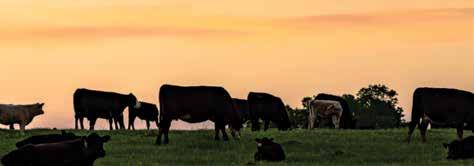
12 Solutions Looking for Problems
Much has been written and discussed relative to proposed marketing mandates. The conclusion of every analyst and peer reviewed research is the proposed bills likely create significant long-term consequences and fail to produce the perceived outcomes.
15 AHA and CSU Begin Sustainable Research
The American Hereford Association and Colorado State University have begun cooperative research to better understand the genetic differences in seedstock relative to enteric methane production and nitrogen excretion. The research will ultimately identify selection tools to reduce beef’s environmental footprint.
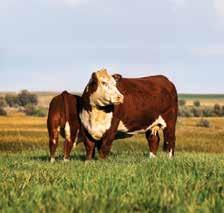
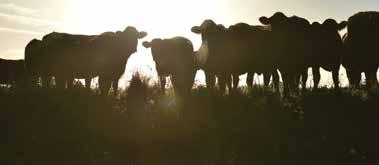
17 Pursed and Pinched Hooter’s Aunt Pinky is living proof that earthquakes can’t compare to the fear instilled to those in shouting distance when a woman loses her purse.
By Wes Ishmael
Despite sizzling hype the last few years surrounding plant-based alternatives to real meat, investor interest appears to be fizzling.
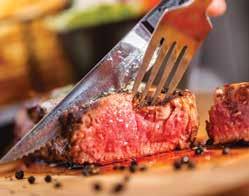
Up front, various and sometimes conflicting sales data mean deciphering sale trends for the category is always akin to heeling a steer in dense fog. Sooner or later, you aim where it makes the most sense.

In this case, consider that the share price for Beyond Meat®—the publicly traded posterchild for alternative meat protein—was about $25 on June 24. A year earlier, it was approximately 82% more at $143.92.
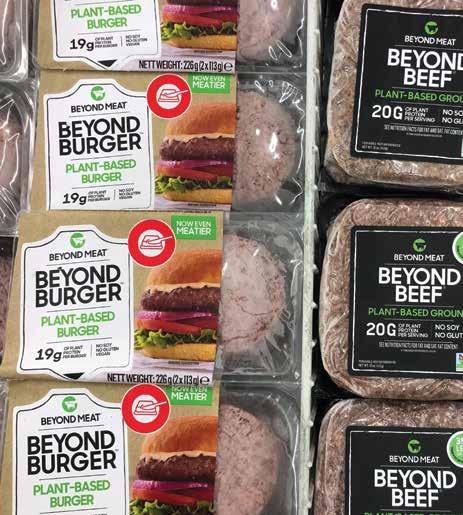
According to the company’s financial results for the first quarter, net revenues increased 1.2% year over year to $109.5 million and the total volume of products sold increased 12.4%. But, net loss was $100.5 million compared to $27.3 million in the first quarter last year.
In its first-quarter financials, Maple Leaf Foods—Canada’s largest prepared meats and poultry producer— told investors it no longer expects spectacular growth in its alternative meat category, but does anticipate slower, steadier growth.
According to data from the Good
PRSRT STANDARD U.S. POSTAGE PAID Jefferson City, MO 65101 Permit #303 Summer 2022 | Volume 5, Issue 4
Continued on page 4
Published by Farmers & Ranchers Livestock, Salina, Kansas
Fake This Investor fascination wanes for plant-based meat alternatives.
Cooperia (shown here) is one of the most prevalent internal parasites in U.S. cattle herds. And infected calves experience 7.4% less average daily gain.1
This summer, adding SAFE-GUARD® (fenbendazole) to your cattle is an easy, convenient way you can help keep your pasture clean – and your cattle profitable.1
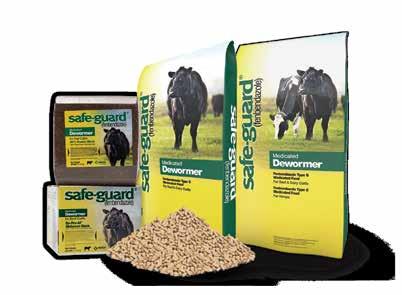
Not only is SAFE-GUARD highly effective – taking out 98.7% of worms2 – it’s also the only dewormer that can be given with feed or in the pasture. That means you can keep up the fight against profit-eating parasites all season long, without re-working cattle. Talk about convenience. If you suspect your warm weather protocol could use a boost, talk to your veterinarian about adding powerful, proven SAFE-GUARD.
BITE BACK AT KILLMOREWORMS.COM
IMPORTANT SAFETY INFORMATION Do not use in beef calves less than 2 months old, dairy calves and veal calves. A withdrawal period has not been established for this product in pre-ruminating calves. Additionally, the following meat withdrawal and milk discard times apply: SAFE-GUARD En-PRO-AL Type C Medicated Block: Cattle must not be slaughtered for 11 days. For use in beef cattle only. SAFE-GUARD 20% Protein Type C Medicated Block: Cattle must not be slaughtered for 16 days. For use in beef cattle only. SAFE-GUARD Type A and other medicated feed products (pellets, cubes, free-choice mineral, or freechoice liquid): Cattle must not be slaughtered for 13 days. For dairy cattle, the milk discard time is 60 hours.
1Stromberg BE, et al. Cooperia punctata: Effect on cattle productivity. Vet Parasitol. 2012;183(3-4):284-291.
2Merck Animal Health National FECRT Database.
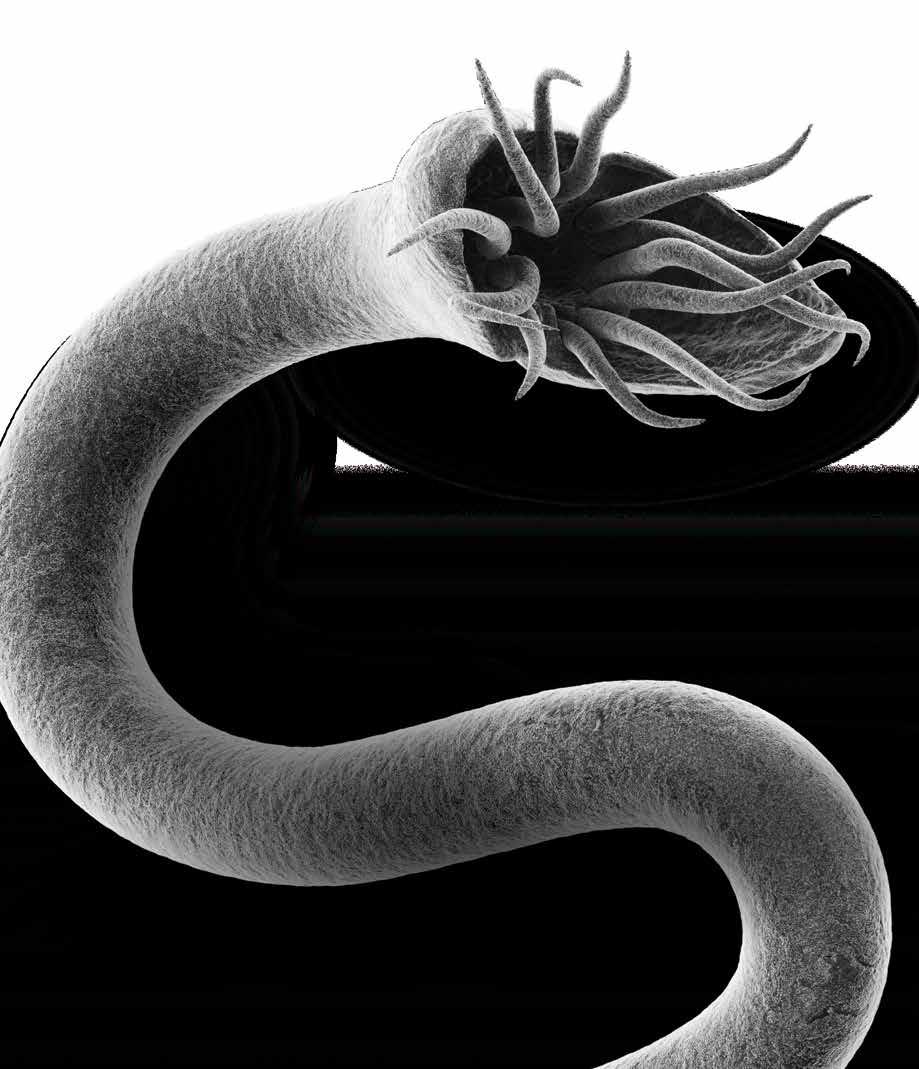
MAHCattle.com • 800-521-5767 © 2022 Merck & Co., Inc., Rahway, NJ, USA and its affiliates. All rights reserved. US-SFG-20040000
By Deb Norton
Most of us are legitimately dubious anytime we’re approached with an “opportunity” too good to be true. Some, however, will always chase the proverbial rabbit, hoping to one day catch it.
The U.S. government will issue $1 billion in funding this year to subsidize small, independent meat processors. Since the initial announcement in early January, almost weekly a new group makes the media cycle announcing intentions to build a new plant, expand an existing plant (that by the way, is currently closed) or somehow qualify for a small portion of a billion bucks.
Janette Barnard is a member of the Merck Animal Health Ventures team. She also writes a weekly blog, “Prime Future,” one of the most thoughtful and insightful in our industry that thoroughly examines a topic from every relevant direction. In her March 14, blog titled, “Red Meat & Venture Capital Don’t Go Together…Do They?” she discusses the absence of venture capital used to build the original big four beef packers. She discusses scenarios where venture capital investments provide more lucrative returns versus the alternative. Barnard states, “Venture capital loves asset-light, high growth companies. And it’s hard to imagine a more directly opposite business model than that of livestock production.”
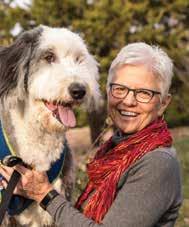
The hard work, capital commitment, management expertise and many failures along the way to make ANY part of livestock production successful
is nearly incomprehensible for anyone not inherently connected to agriculture. Yet now we’re seeing the increase in outside investors (i.e., venture capital) convinced their business plan will be more successful and produce greater returns on their investments than generations of professionals who built their businesses from the ground up.
Be sure to read Wes Ishmael’s, “Fake This,” in this issue. Several corporate media outlets including Bloomberg, Wall Street Journal, etc., like to report the fake meat phenomenon has made the top of the list of marketing successes. Bloomberg reports, “The market for plant-based meat alternatives is expected to reach $450 billion by 2040. In the U.S. alone, plantbased meat sales grew by 45%, for a total of $1.4 billion.”
As always, the devil is in the details. Wes reports, “Despite sizzling hype, the last few years surrounding plant-based alternatives to real meat, investor interest appears to be fizzling… In this case, consider that the share price for Beyond Meat®—the publicly traded posterchild for alternative meat protein—was about $25 on June 24. A year earlier, it was approximately 82% more at $143.92. According to the company’s financial results for the first quarter, net revenues increased 1.2% year over year to $109.5 million and the total volume of products sold increased 12.4%. But, net loss was $100.5 million compared to $27.3 million in the first quarter last year.”
Beef production and processing is hard, just like most any business these days. Arguably, the technology sector investors’ “fair-haired child” for a more than a decade has painted a delusional picture which simply doesn’t translate to the majority of meat protein production. Companies like Apple, Microsoft, Google, Meta, Amazon and others are worth more than some small countries largely due to venture capital seed money and product successes. But, compared to more conventional industrial sectors, venture capital investments fail more often than they succeed or the expected return on investment falls woefully short.
At the end of the day, the most valuable dataset for those of us in beef production is the result of consumer voices and choices and those signals are loud and clear. Consumers prefer high quality beef. They want assurances the food supply is safe and the choices they make for their families are affordable. Outsiders may perceive beef production and processing as being too conventional and slow to change.
Over 280 years ago, the first meat market opened near Boston, Massachusetts.
F&R Livestock Resource page 3
Sale
Produced by www.CogentIdeasInc.com
Resource F&R Volume 5, Issue 4 Summer 2022 Published quarterly by Farmers & Ranchers Livestock, Salina, Kansas 1500 W. Old Hwy 40 Salina, Kansas 67401 (785) 825-0211 • (785) 826-1590 (fax) FandRLive.com find us on Facebook Facebook.com/FarmersAndRanchersLivestock Owner: Farmers & Ranchers Livestock, Mike Samples, Salina, Kansas (785) 826-7884 Editor: Deb Norton, Deb@CogentIdeasInc.com Production Coordinator: Julie Tucker Graphic Designer: Daric Wells Editorial Assistants: Dixie Russell, Dave Cumpton Contributing Editors: Wes Ishmael, Paige Nelson, Sara Gugelmeyer Contributing Artist: Ted Foulkes Sales Jay Carlson Carlson Media Group, LLC (913) 967-9085 Subscriber Questions: To be added or removed from our mailing list, contact Julie Tucker, Julie@ CogentIdeasInc.com or (785) 408-1214. F&R Livestock Resource is published quarterly with mail dates of January 15, March 1, August 15 and October 1 by Farmers & Ranchers Livestock, Salina, Kansas. Continued on page 18
F&R Advertisers / Page /
Date
Livestock
From the Editor
Farmers & Ranchers Livestock Commission Co., Inc. Salina, Kansas • (785) 825-0211 Farmers & Ranchers Upcoming Sales and Events Special Cow Sale August 9 Cow Sales Oct. 18, Nov. 15, Dec. 20 Calf Sales Oct. 25, Nov. 1, Nov. 8 Fall Classic Catalog Horse Sale October 7-9 Gardiner Angus Ranch 9 September 26 Jay George 12 October 5-6 Jamison Quarter Horses 23 October 5-6 KSU Beef Stocker Field Day 6 September 29 Jorgensen Land & Cattle 15 September 17 NextGen Cattle Co. 20 September 24 Santa Fe Ranch 12 October 5-6 Seedstock Plus 10 Aug 20-21, Oct. 15, Nov. 5 Super Cow/Calf Show 8 September 14 At
end of the day,
valuable dataset
of us in beef production is
of consumer voices and choices and those signals
For advertising information, contact: Jay Carlson | Carlson Media Group (913) 967-9085 • Jay@CarlsonMediaGroup.com Don’t miss our next issue October 1, 2022. Have I got a deal for you!
the
the most
for those
the result
are loud and clear.
Food Institute and data company, SPINS, sales of plant-based meat alternatives in the United States last year totaled $1.4 billion, the same as a year earlier. Plant-based milk dominated at $2.6 billion.
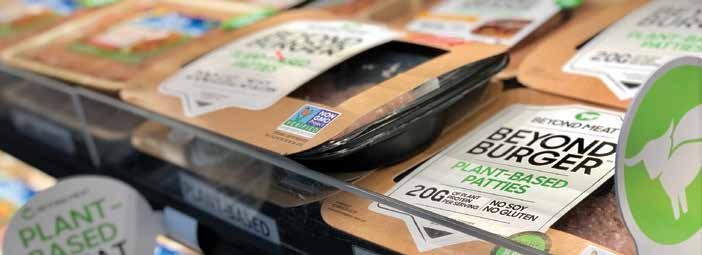
Perhaps the most logical conclusion is that minor consumer interest will continue for alternatives, but the gleam for investors has faded amid increasing competition in the category, alongside the lack of explosive sales growth and underwhelming profit potential.
Choosing with Dollars
As for the consumer side of the equation, interest appears to be stagnant.
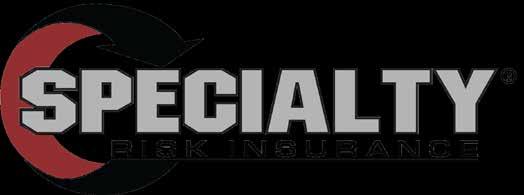
Consumers who prefer beef over plant-based protein alternatives said they are willing to pay nearly two dollars more per meal for a burger when dining at a restaurant, according to a study from Kansas State University (K-State).
But, the same study notes, those who have turned to plant-based protein alternatives are equally passionate about their choice, saying they would be willing to pay $1.48 more per meal.
Those are among the key findings
released by K-State agricultural economists Glynn Tonsor and Ted Schroeder in the study published in January 2021—Impact of New Plant-Based Protein Alternatives on U.S. Beef Demand. The study was co-authored by Jayson Lusk, a distinguished professor of agricultural economics at Purdue University. It was funded by the Beef Checkoff.
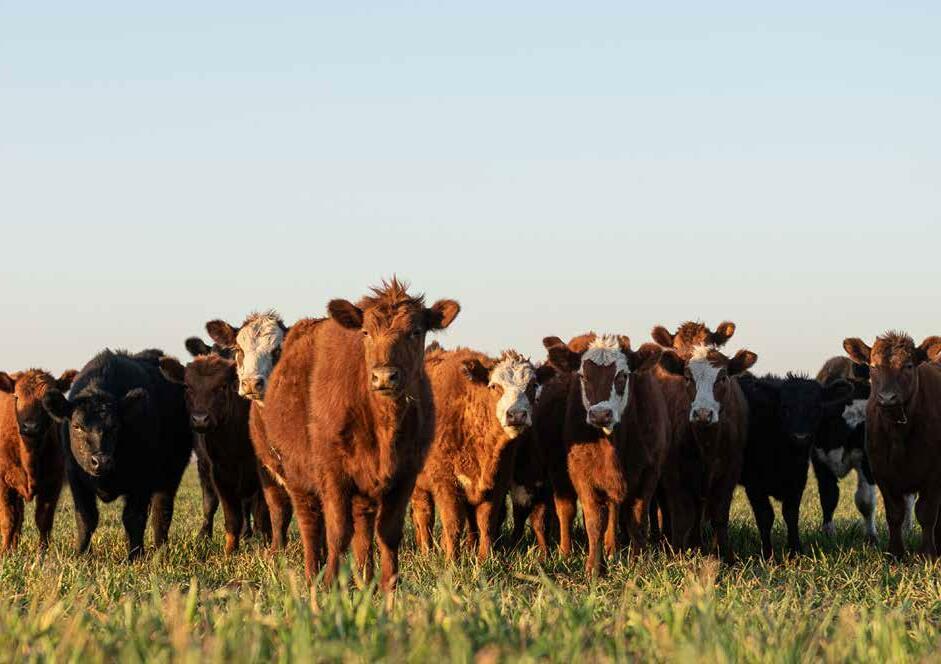
“Beef has what we call a good image and we document it has a good image throughout the report,” Tonsor says.

“We’ve looked at a litany of questions, such as how does beef compare to plant-based proteins on a lot of dimensions, such as taste, safety, price, nutritional content, protein, iron and even on whether it’s good for farmers, the planet and consumers.”
The nationwide study involved more than 3,000 consumers that represented the population of the country. Nearly 70% of respondents identified themselves as regular meat consumers (those who regularly consume meat or food from animals), while the remainder identified with such alternative diets as vegan, vegetarian, flexitarian or other.
According to Tonsor, regular meat consumers reported being willing to pay $1.87 more per meal for a beef burger in a restaurant. They also would pay up to 29¢ more per pound for store-brand, 80% lean ground beef at the grocery store.
Those who prefer alternative diets would pay $1.48 more per meal in a restaurant, and up to $2.32 per pound
more in the grocery store.
“There’s a big preference among regular meat consumers today for the beef burger, and there’s a strong preference among the alternative diet folks for those newly offered items,” Tonsor says.
But the number of consumers choosing beef over plant-based alternatives is clearly in favor of the beef industry. The report notes that beef is consumed three times more often than plant-based proteins in the U.S.
Among the factors influencing consumer choices are the taste, safety and price of beef, which they find more appealing. “Those are key differentiation points we see in this study and have seen in several studies,” Tonsor says. “Taste and safety, in particular, are key
page 4 Summer 2022 Continued from page 1
Your Livestock Risk Protection Specialists. Protect Yourself against unexpected declines in the market. Visit us online at SpecialtyRiskInsuranceAgency.com/LRP or give us a call at 417-359-5470
Put a big dent in resistant fly populations with a fall application of BRUTE® .
Studies show that the best way to stop resistant flies from attacking your cattle next spring is to hit them with an application of BRUTE® Pour-on for Cattle this fall. BRUTE® controls horn flies, face flies and other biting flies, as well as Gulf Coast ticks and lice. Best of all, BRUTE® protects your cattle for as little as 48 cents a head.
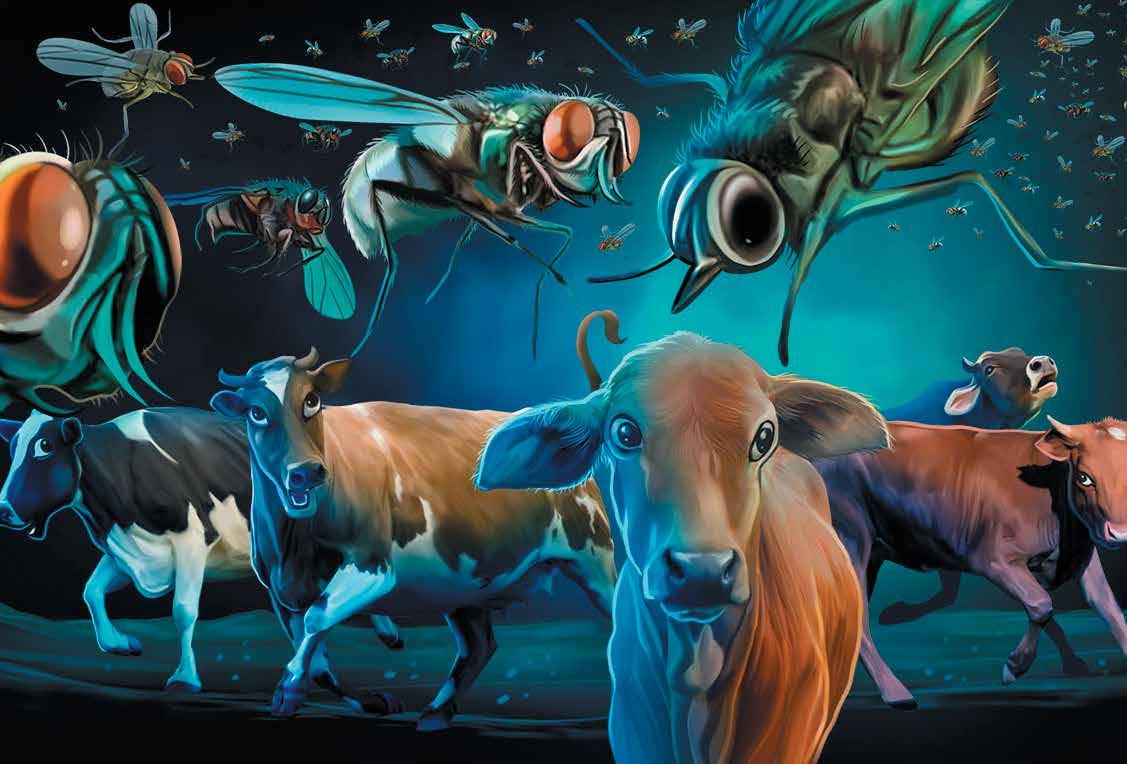
So make sure resistant flies don’t come back to haunt your herd next spring by treating your cattle with BRUTE® this fall. Always read and
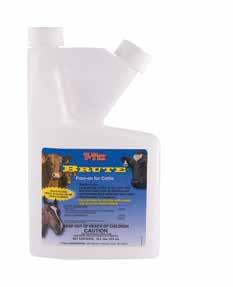
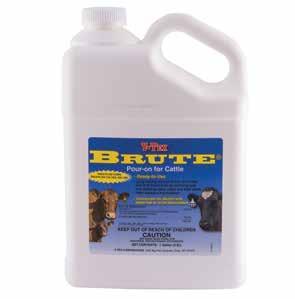
follow label directions. BRUTE® and Y-TEX® are registered trademarks of Y-TEX Corporation. © 2020 Y-TEX Corporation.
Don’t let resistant flies come back to haunt your cattle next spring.
Dash For Cash, High Brow Cat, Playgun, Docs Hickory, Docs Oak, Paddys Irish Whiskey, Three Dee Skyline, Sophisticated Cat, Shining Spark, Metalic Cat, Dual Pep just to name a few. These colts and yearlings
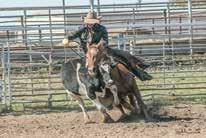
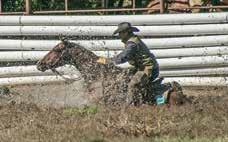
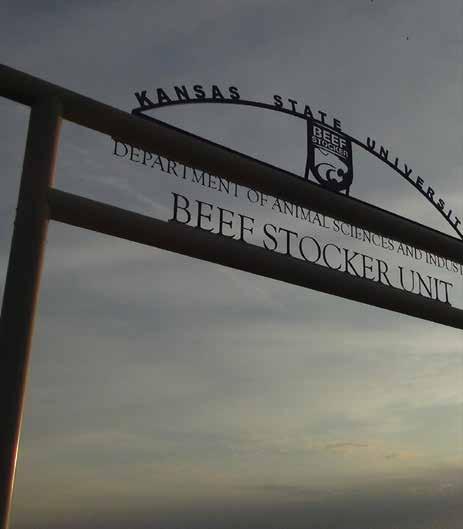
drivers of U.S. beef demand.”

“The protein market is immensely competitive, both from existing and new products being introduced,” he adds. “At the same time, global protein demand is strong and growing. The U.S. beef industry produces a high quality, tasty, safe, nutritious, healthy and affordable product in an increasingly sustainable way. Capitalizing on what the industry does well while continuously striving to do it better is the best advice we can provide to compete in the evolving global protein market.”
Never mind the fact that the market appears to be more about how alternative meat proteins fit with real meat, rather than one against the other.
Some Consumers Choose Both
Choosing to consume beef or plant-based proteins designed to mimic the real thing is not an either/ or proposition, according to a more recent study—“Benchmarking U.S. Consumption and Perceptions of Beef and Plant-based Proteins.” It was conducted by Hannah Taylor of the USDA Economic Research Service (she was with K-State when the study was conducted) along with Lusk, Schroeder and Tonsor.
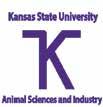

The analysis comprised two separate studies. One documents factors affecting beef and plant-based con-
sumption. The other focuses on factors motivating consumers to include beef and/or plant-based proteins in their diets.
“An interesting insight comes from evaluating beef and plant-based consumption together. Of the 6% of respondents who ate plant-based proteins, 58% also ate beef during the prior day. In other words, 4% of respondents ate both beef and plant-based proteins in the same day,” according to the study.
“This indicates beef and plant-based protein consumption are not necessarily exclusive of each other. More participants ate both proteins than ate plant-based protein only and not beef.”
Around 6% of all respondents consumed plant-based proteins (patties and crumbs specifically) at least once during the previous day, while 53% ate beef at least once.
The fact that some consumers already consume beef and plant-based proteins in the same day could motivate development of blended products, according to the researchers.
“Blending may be an attractive consideration for the beef industry if these proteins (plant) become much cheaper to produce and consumers perceive them as close alternatives to animal-derived meat. Blending products could decrease the price of these hybrid products, increasing the quantity demanded
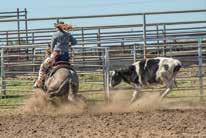
page 6 Summer 2022 Register online at KSUBeef.org or 785-532-1267 Registration is $25 by Sept. 15 $35 at the door Join us for the 23rd Annual KSU Beef Stocker Field Day. The program will include the latest practical information to help you make the most of significant changes occurring in the beef industry. We’ll offer management tips to help you optimize your stocker operation and provide greater flexibility in the future. KSU Beef Stocker Field Day Thursday, Sept. 29, 2022 • 9:30 a.m. KSU Beef Stocker Unit • Manhattan, KS For More Information, Contact: Farmers & Ranchers 785-825-0211 Mike Samples • 785-826-7884 Kyle Elwood • 785-493-2901 www.fandrlive.com Farmers & Ranchers Livestock Comm. Co., Inc. Salina, Kansas Your Kansas Connection for Ranch & Rope Horses Come buy your next winter with us October 9! Fall Classic Catalog Horse Sale Saturday, October 8, 10:00 AM Rope Horse Preview Friday, October 7, 6:00 PM 14th Annual F&R Futurity Friday, October 8, 2021, 10:00 AM $14,000 added money 25th Annual Fall Colt & Yearling Catalog Sale Farmers & Ranchers Livestock October 9, 10:00 AM Selling 250 baby colts and yearlings representing great bloodlines like: Smart Chic Olena, Peptoboonsmal, Dash Ta Fame,
will be paid up in the 2024 and 2025 Farmers & Ranchers Cow Horse Futurity.
Continued on page 8
Fike Named Advisor of the Year
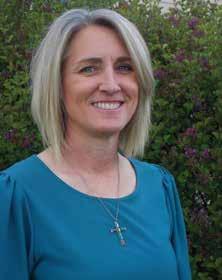
Dr. Karol Fike, Kansas State University teaching associate professor, was recognized as the 2022 College of Ag Advisor of the Year.
“This is truly a fitting award that embodies Dr. Fike’s contributions to ASI students,” says Dr. Mike Day, KSU animal sciences and industry department head. “At times she has a line of advisees, students seeking internships, students from the careers course, and others, waiting for her expert advice. During the heart of the pandemic, Karol was a constant in terms of being available for students that needed help on campus. Her dedication to ASI students is recognized and greatly appreciated by all in ASI.”
Fike completed her bachelor’s degree in animal sciences at Iowa State University in 1991. She continued her education at the University of Nebraska-Lincoln, earning her master’s and doctorate, studying reproductive physiology in beef cattle.



With a passion for teaching and working with students, Fike first taught courses in Anatomy and Physiology, Human Nutrition, and Biology at Western Iowa Tech Community College. She spent four years on the faculty at Ohio State University teaching Introductory Animal Sciences, Animal Products, advising students and coordinating the undergraduate internship program.
Joining the K-State ASI department in 2006, now Fike advises students, teaches Farm Animal Reproduction (ASI 400), Animal Sciences Career Preparations (ASI 480), Physiology of Reproduction in Farm Animals (ASI 710) and she coordinates the departmental internship program (ASI 599). She also provides leadership to the K-State undergraduate Feedlot Boot Camp and Teaching Program and Animal Sciences Academic Quadrathlon competition. Her research interests include beef cattle reproductive physiol-
ogy and management, and evaluation of factors affecting sale price of beef calves marketed via video auction.
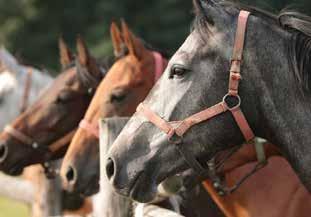


A gifted advisor, teacher and advocate for students, Fike was instrumental in starting and annually leading the K-State Feedlot Management Collegiate Boot Camp. She organizes the K-State Academic Quadrathlon event and advises the winning team that represents K-State in the Midwest American Society of Animal Science contest.
Karol and her husband, Gary, have three children—Jackson, Marshall and Grace—and make their home near Westmoreland, Kansas.
Advisor of the Year
Spring
For More Information, Contact: Farmers & Ranchers • 785-825-0211 | www.fandrlive.com Mike Samples, Manager • 785-826-7884 | Kyle Elwood • 785-493-2901 High Seller 4th High Seller 3rd High Seller 2nd High Seller Ranch Horse Champion 5th High Seller Top 20, Saturday Lot Consignor Name Assoc. $ Notes 134 Josh Lilley Cats Tuff N The Buff AQHA $20,500.00 2015 buckskin gelding grandson of Cats Merada—ranch, rope 18 Salvador Torres EBS Aglow With Pepto AQHA $20,000.00 2016 black gelding by Stylin With Pepto—ranch, rope, ranch horse champion 68 Chad Harris One Smart Sensation AQHA $17,000.00 2015 sorrel gelding by One Smart Request—ranch, rope 40 Jess Coirier Custom Made Coctail AQHA $15,500.00 2016 bay gelding by grandson of Nu Chex To Cash—ranch, 2nd place in ranch horse 48 R&S Livestock Tiveo Silver Hancock AQHA $14,600.00 2018 by Hairpen Derek Shorts—ranch, 2nd place ranch horse 143 Ryon Boatright RBR Peppy San Eddie AQHA $13,500.00 2018 sorrel gelding by Sun Olena Rey—head horse 30 Rex Buchman Hurricane Rain AQHA $12,500.00 2014 sorrel gelding by CRR Hurricane Cat—ranch, 4th place ranch horse 107 MP Performance Horses Swagin It AQHA $12,000.00 2018 bay gelding by One Fabulous Time—ranch 101 Jamie Stover Dashing Lil Cat AQHA $10,500.00 2016 sorrel mare by Moonstruck Pepto—trail, team rope 35 MP Performance Horses Driftin Red Wagon AQHA $10,000.00 2016 sorrel gelding by Drifters Joe—ranch 20 Franklin Higgs Rondo Cowboy Joe AQHA $10,000.00 2015 chestnut gelding by Moleo Rondo—ranch 161 Lane Kennedy Watchers Ashwood P15 AQHA $9,500.00 2015 gray mare granddaughter of Playgun Watcher—ranch 65 Brad Smith Blackjack GRADE $9,300.00 2010 black pony—family pony 91 William Johnson Five Acre Jaycee AQHA $9,000.00 2019 gray filly by Jaycee Show Me—HPI & Futurity Eligible 59 Maceyn Howard IMA Nifty Pistol AQHA $9,000.00 2007 gray gelding by Little Pistol Silver—rope, family horse 8 MP Performance Horses Four
Friday AQHA $8,500.00 2015 buckskin gelding grandson of Sun Frost—ranch 89 Cody Penner Ima Sob Handle AQHA $7,900.00 2015 buckskin mare grandson of Two Eyed Red Buck—ranch 57 Wes & Casie Roberts Cutta Blue Star AQHA $7,500.00 2019 black gelding grandson of Freckles Boon—ranch 132 Kingston Chang Puddin GRADE $7,300.00 2017 sorrel gelding—head horse 52 Lisa Johnson Plain Ole Fast AQHA $7,000.00 2018 brown gelding by Hasta Be Fast—barrels and ranch
Spectacular Sale Farmers
Top 5 Avg. $17,520 Top 10 Avg. $14,610 Top 15 Avg. $12,860 Top 20 Avg. $11,555
& Ranchers
Dr. Karol Fike
This show will highlight the most valuable assets in the beef production system—the commercial cow and calf. The Super Cow/Calf Show is an unhaltered, unfitted, exhibition of commercial females with natural calves at side. n All cows
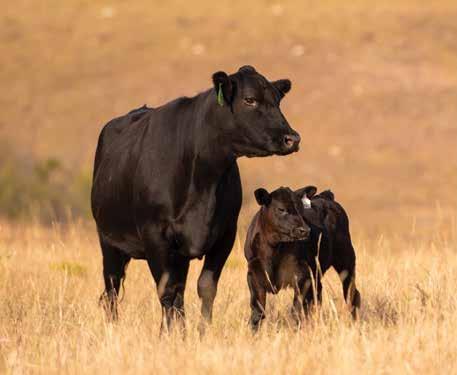
of both traditional beef and plant-based proteins,” according to the study. “In this way, plant-based proteins could compete with imports of lean beef destined for blending into ground products and thus fulfill a market segment for U.S. produced products.”
Again, depending on the source, the market share for plant-based alternatives to beef appears to be exceptionally small, well under 10% and likely closer to 5%.
“Current consumer preferences do not support projected major demand changes, especially since whole muscle products such as steaks and roasts are currently only available from animal sources,” say researchers.
Drive the Conversation
At the same time, much of the fallacious information some alternative protein purveyors spread in the name of sales could do irreparable harm to real meat industries, unless it’s countered by facts.
IPES-Food—the International Panel of Experts on Sustainable Food Systems—recently published a reasoned report—“The Politics of Protein,” which focuses on the real-versus-fake debate from a global perspective. IPES-Food is a diverse and independent panel of experts guided by new ways of thinking about research, sustainability, and food systems.
The report sheds light on misleading generalizations, which currently dominate public discussion about meat and protein (see IPES-Food. org). These are the conclusions in the report’s executive summary.
• There’s lots of hype about meat and protein
• It’s narrowly focused on CO2
• It ignores how food is produced
• It ignores differences between world regions
• It fails to see the whole food system
• It’s focused on simplistic silver bullet solutions

For instance, the report addresses claims about red meat consumption being harmful to human health.
“These claims have often come alongside dietary recommendations to curb or eliminate red meat consumption, and/or the promotion of vegan and vegetarian diets. However, the prevailing claims overstate and over-generalize the health risks of red meat, which are partly determined by how livestock are raised and finished, and how meat is prepared and consumed,” according to the report. “Meanwhile, the fact that (red) meat is an important source of micronutrients and high-quality bioavailable protein for many populations around the world is regularly overlooked…”
Another example is the notion that
alternative proteins are more environmentally friendly than livestock production.

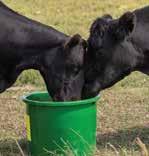
“Plant-based meat, dairy, and fish substitutes, as well as lab-grown meat are being rapidly developed and rolled out, based on bold claims about their ability to reduce environmental impacts, improve diets, and spare animals from being farmed and slaughtered,” the report explains. “‘Alternative proteins’ may improve individual sustainability indicators in direct comparisons with their industrially produced equivalents. However, the evidence to date is limited and speculative (particularly for lab-grown meat). The implications for health and sustainability ultimately depend on what ingredients are used, how they are produced and processed, as well as what they are replacing and where they are being marketed. Many of the latest substitutes rely on energy-intensive hyper-processing to produce key additives, as well as sourcing ingredients from industrial monoculture systems…”
Of course, researchers also address claims by some in the meat industry.
“According to a range of increasingly vocal actors, shifting large numbers of animals into rotational grazing systems is the answer to livestock’s environmental problems,” according to the report. “The evidence confirms that efficiencies can be gained by dedicating marginal lands to livestock, with well-managed, pasture-based systems showing considerable soil carbon sequestration potential. However, some claims about the potential of regenerative livestock management’ and ‘carbon farming’ risk overstating the ability of soils to store carbon, while separating GHG-mitigation from other interconnected challenges (e.g. biodiversity loss)…”
The extensive report provides details behind claims and offers recommendations aimed at shifting the debate from hype to sustainable food systems around the world.
“Discussion is characterized by bold and conflicting claims, as industry groups, philanthro-capitalists, influential media figures, and many others weigh into the debate,” according to the report authors. “Their claims offer competing visions of what problems need to be addressed, and how they should be solved. And in increasingly polarized debates, a range of different solutions and different ‘protein transitions’ are now being demanded—from meat taxes to R&D funding for lab-grown meat, from vegan diets to regenerative agriculture and ocean farming, from precision livestock packages to industrial-scale insect protein…”
page 8 Summer 2022
calf independently $5,000 ADDED MONEY
September 14, 1PM • At the Kansas
PERFECT PASTURE PERFORMANCE ON ORDERS FROM AUGUST 1 THROUGH OCTOBER 1, 2022!* (Orders must be picked up or delivered before October 1. *KE Feeds dealers are not eligible for discounts.) All Kattle Energy tub orders placed from August 1 through October 1, 2022, will receive a $10 PER TUB DISCOUNT! Text or call (620) 509-2077 or email sales@kefeeds.com and use the promo code KEF22SCDM to take advantage of this special SUPER COW/CALF SHOW discount. 1630 Avenue Q • Lyons, KS 67554 • KEFeeds.com Show Entry Deadline August 15 STATE FAIR SPECIAL! $10 OFF PER TUB
and calves will be judged as commercial n Three-judge system will judge cow and
SUPER COW/CALF SHOW
State Fairgrounds
Continued from page 6
REAL cattle. REAL people. REAL profit.
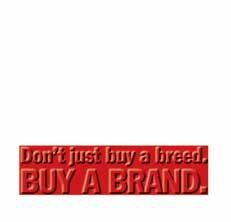
Producing high quality beef in demand around the world isn’t magic, luck or an accident. The process begins in our pastures with a plan based on decades of data, discipline and genomic progress.
In a recent real-world comparison, a GAR home-raised steer, sired by GAR Unassisted, grading USDA Prime, YG2, out of a first-calf heifer, returned $448 more than the Low Choice commodity carcass with the exact same carcass weight, harvested on the same day. A real time comparison fabricating the whole loins of each carcass documented more than $120 wholesale price difference in the two loins.
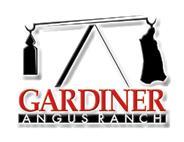

Some will argue, “that’s only one head.” Our discipline, over decades, has proven if we can do it with one, we can do it across a population. Since 2017, more than 14,000 head have been processed at National Beef, using GAR USPB delivery rights. More than $1.78 million has been returned to the producers. More than 98.7% of the cattle graded Choice or higher, 31% graded Prime and returned more than $126 above the base price to the owners of the cattle.
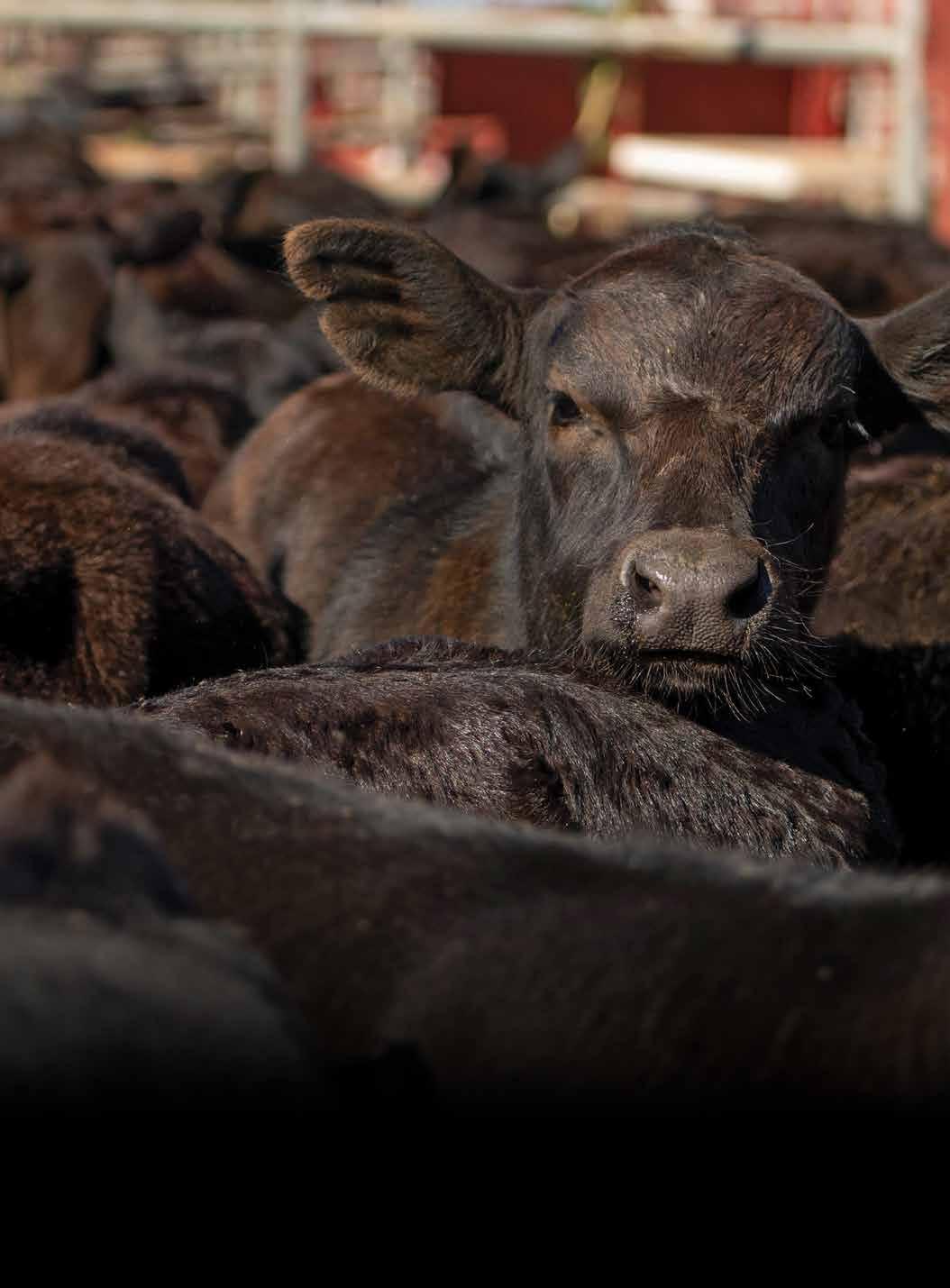
18 TH ANNUAL FALL BULL SALE Monday, Sept. 26, 2022 • 9 AM At the ranch near Ashland, Kansas Selling approximately 875 Head, Including: 450 Registered Angus Bulls • 75 Bred Registered Angus Females 350 GAR-Influenced Elite Bred Commercial Angus Heifers 1182 CR Y | Ashland, Kansas 67831 | Office (620) 635-2156 | GAR@GardinerAngus.com | www.GardinerAngus.com The Henry & Nan Gardiner Family | Mark (620) 635-5095 | Greg (620) 635-0233 | Grant (620) 635-0382 | Cole (620) 635-0727 | Ransom (620) 635-0283 Proud to be a founding member of U.S. Premium Beef. More than $11.31 million in premiums and dividends have been paid to GAR customers using USPB delivery rights. Watch the sale and bid live online at LiveAuctions.tv and SuperiorClickToBid.com. Register to bid prior to sale day. GARDINER SERVICE AFTER THE SALE Free Delivery | USPB Delivery Rights | Repeat Buyer Discount | Feedlot Relationships | Marketing Assistance | Revenue Sharing Semen Interest | G3 Age & Source High Accuracy Progeny Proven Genetics | Method Genetics Benchmarking | Genetic Consultation | THE Gardiner Angus Ranch Guarantee
Higher Prices Looming Markets
By Wes Ishmael
Cattle prices budged higher through the spring but never caught fire as expected—the dog-eared mountain in the distance so close but still so far away.
Supply chain disruptions associated with Russia’s invasion of Ukraine—yet another black swan event—rocked commodity markets, adding fuel to already-rampant inflation. Drought forced more cattle to feedlots sooner and elevated beef cow slaughter, increasing beef production near the previous year’s record level.
By the middle of June, though, apparent feedlot marketing currentness, borne by aggressive cattle slaughter began to hint at what’s coming.
October Feeder Cattle and Live Cattle futures gained $6 from the end of May to the middle of June. The CME Feeder Cattle Index increased $7.20 during the same period to $160.56. The five-area direct average steer price gained $5.60 on a live basis through the first three weeks of June to a seasonal high of $143.67/cwt. The average price in the beef climbed $7.84 to $229.73.
There’s a wide swath of fed cattle to come from elevated placement levels in recent months, then it likely will be challenging to find cattle to pull forward.
Accelerated Beef Cow Slaughter Continues
Year-to-date beef cow slaughter was 15% more than last year through the end of May and likely will end the year with a double-digit increase, says Derrell Peel, Extension livestock marketing specialist at Oklahoma State University, in his mid-June market comments.



“While some drought reduction regionally has improved pasture conditions, range and pasture conditions nationally are still at the worst level ever for this time of year,” Peel explains “In other areas, drought continues to expand. Colder than normal weather in northern regions this spring and reduced fertilizer use everywhere are also contributing to delayed and reduced pasture and hay production. The most recent weeks of slaughter data have year-over-year beef cow slaughter increasing rather than decreasing, as the reality of reduced pasture and hay production becomes clear moving into June.”
Based on weekly actual slaughter data from the Agricultural Marketing Service, ERS analysts say that for the first four weeks of May, beef cow slaughter averaged 10,000+ head more per week than the same period last year.
Peel points out this year’s beef cow slaughter increase comes after last year’s elevated level, which was 9% more than the previous year for a net herd culling rate of 11.6%. Beef cows in the Jan. 1 inventory were 2.3% less than the prior year—4.9% less than the recent peak number in 2019.

“Given beef cow slaughter so far this year, a significant level of culling is guaranteed…” Peel says. “The current level of beef cow slaughter suggests a culling rate in excess of 13% this year and a potential beef cow herd decline of 1 million head or more.”
Prices Ahead
drought in some regions of the country is still influencing the market as cow and heifer slaughter
page 10 Summer 2022 Seedstock Plus Fall Sales! Fall Bred Heifer On-Line Sale! Opens August 20th - 8 a.m. Closes August 21st - 8 p.m. (soft close) Approximately 30 Balancer & Gelbvieh heifers from Seedstock Plus Members! Watch the website & Facebook page for updates and information! Fall Bull & Female Sale October 15, 2022 * 12 noon Joplin Regional Stockyards, Carthage, MO Selling 150 Angus, Gelbvieh & Balancer bulls! ALL BLACK & 18 months old!! Also registered & commercial females!! Red Reward Fall Bull & Female Sale November 5, 2022 * 12 noon Wheeler Livestock, Osceola, MO Selling 50 Gelbvieh & Balancer bulls! ALL RED & 18 months old!! Also registered & commercial females!! 877-486-1160 toll free to request catalogs! Or email: john@seedstockplus.com John cell# 660-734-1165 www.seedstockplus.com for updates & videos!
“Continued
are showing glimmers of the expected surge higher.

ERS forecast the average feeder steer price (basis 750-800 lbs., Oklahoma City) at $166 in the third quarter, and $170 in the fourth quarter for an annual average price of $162.76. Next year, the first-quarter price is projected at $170.00 and the annual average price is forecast to be $198.25.
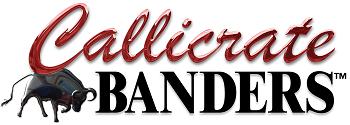
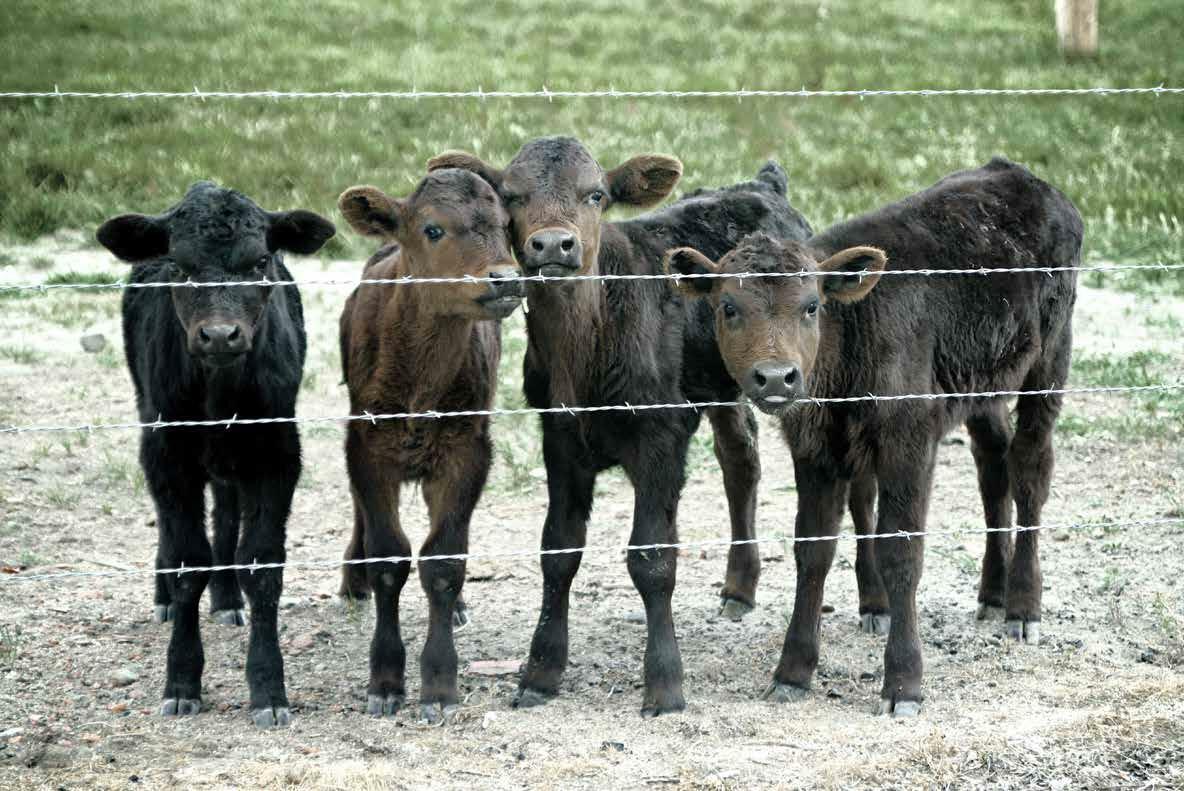
ERS left projected corn acreage and yield unchanged, but increased beginning and ending stocks on reduced exports, in June’s World Agricultural Supply and Demand Estimates (WASDE). The season-average farm price for corn received by producers was unchanged at $6.75/bu.
“The main conclusion is that there is no relationship between price discovery and the volume of negotiated cash trade. There is no clear overall problem that price discovery is somehow deficient in regional fed cattle markets. Mandating cash trade does not address a price discovery problem that is observed today or since the beginning of Livestock Mandatory Reporting.”

That was one of the insights Stephen Koontz, agricultural economist at Colorado State University provided in testimony during this spring’s Senate hearing to review the Cattle Price Discovery and Transparency Act of 2022, and the Meat and Poultry Special Investigator Act of 2022. Among other things, the act would mandate minimum levels of negotiated cash fed cattle trade.
Koontz’s insights are based on a bevy of research during his career exploring cash price discovery in cattle markets.
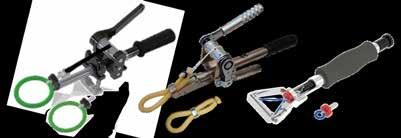
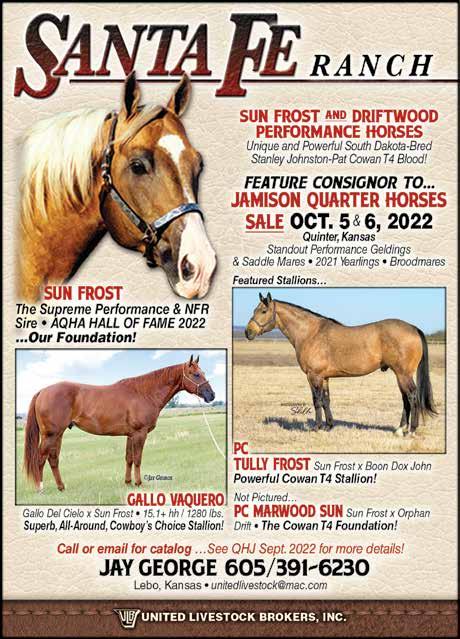
“It is also important to recognize what price discovery is not—price discovery is not higher prices,” Koontz explained. “Price discovery is the market moving quickly and clearly to the appropriate price level. At times this is a lower fed cattle price and other times a higher price. It is a common misconception that better price discovery implies better prices for the individual contemplating the issue. And there is no scientific evidence that improved price discovery has value not already revealed in price nor will improve prices to producers.”
On the other hand, mandating minimum levels of regional cash fed cattle trade, thereby reducing the use of alternative marketing arrangements, would come at a heavy cost, likely borne mostly by cow-calf producers.
“Mandating minimum cash trade is substantially costly. Costs are at least hundreds of millions of dollars and more likely billions of dollars. These costs will be leveled on cow‐calf producers nationwide and consumers of beef both domestically and internationally,” Koontz explained. “Primary research which discovered these costs is almost 20 years old—but the economic concepts are foundational and the costs today are likely substantially higher. There is no research which can attribute higher cattle prices to mandated cash trade. Likewise, my preliminary work has revealed to me that price discovery is not improved with mandated cash trade. The price discovery we currently have in regional fed cattle markets is not deficient. And the cost‐benefit of mandated cash trade is clear.”
page 12 Summer 2022
C a l l i c r a t e B a n d e r s . c o m 7 8 5 - 3 3 2 - 3 3 4 4 W E E T e n s i o n e d L o o p f o r N e w b o r n s S M A R T G e t t i n g t h e J o b d o n e s i n c e 1 9 9 1 P R O B u i l t - i n C u t t e r S e l f - l o c k i n g L o o p CASTRATION MADE EASY
As for fed cattle, ERS left the projected average five-area direct average fed steer price for this year at $140.10, despite higher forecast beef production. Prices are forecast at $140 in the second quarter, $136 in the third quarter and $145 in the fourth quarter. Next year’s average price was projected at $153.

ERS analysts note weekly fed cattle slaughter is finally back to pre-COVID levels, reducing the need for heavy Saturday slaughter.
“Further, weekday highs have hit thresholds not seen since 2013. Subsequently, it appears that limits to packers’ processing capacity is improving to a point where the fed cattle market is emerging from what may have restricted the market these past two years,” ERS analysts say.
Projected beef production this year is 27.9 billion lbs. The total would be just 41 million lbs. less than last year. Beef production next year was projected to be 1.96 billion lbs. (-7.0%) less than this year at 25.9 billion lbs.
Packer Margins

Narrowing





Left to their own devices, markets continue finding where they need to go, like the destination or not (see “Solutions Looking for Problems”). In this case, though still plenty wide, packer margins are beginning to narrow.
“The gross margin between live prices for cattle and wholesale beef narrowed again in May, equaling $391.17 per 1,000 pounds of steer. The five-year average for the month of May is close to $550 per 1,000 pounds which factors in 2020’s high value of $1,592,” say analysts with the Livestock Marketing Information Center (LMIC), in their mid-June Livestock Monitor. “Tossing 2020 out, the five-year average (2019-2015) is $251 per 1,000 pounds of steer. Across all months, gross packer margins have been wide for the better part of two and half years.”


As existing and new packing capacity competes for fewer cattle, packer margins will undoubtedly continue retreating.

Beef Demand Resilient
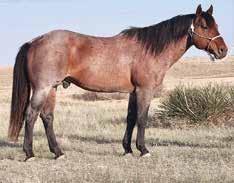
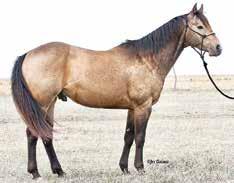
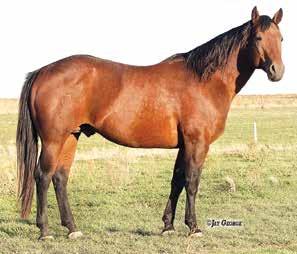

Supply fundamentals favor higher prices going forward, but global economic growth and consumer wherewithal cloud the demand outlook.
Food inflation and rising costs contributed to a year-over-year 4% decline in consumer visits to U.S. restaurants in April compared to a year ago, according to The NPD Group. Restaurant traffic in April was 11% below the pre-pandemic level in April 2019. NPD analysts note the price of a foodservice meal was 9% higher than April of 2019.
There were possible signs of domestic consumer price resistance for some beef cuts heading into summer grilling season. As well, LMIC noted the first pullback in chicken breast prices for six months amid the weakest consumer sentiment since 1978.
“The number (consumer sentiment index) is shocking, given it’s lower than the Great Recession, but also speaks to the volume of stresses consumers may be facing,” according to LMIC analysts. “How this will impact meat case purchases is uncertain, but to see chicken prices have a strong two weeks of pullback after so many weeks of gains might be an indication consumers have reached their limit even for one of the least expensive animal proteins.”
Similar questions wait to be answered by international U.S. beef

customers. So far, though, demand remains extraordinary.
U.S. beef exports continued their torrid pace in April, topping $1 billion for the third time this year, according to data released by USDA and compiled by the U.S. Meat Export Federa-
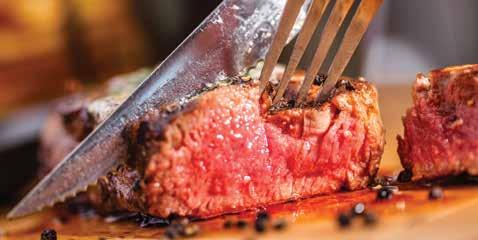


tion (USMEF).







Beef exports totaled 124,408 metric tons (mt) in April, up 3% from a year ago and the fifth largest on record. Export value soared 33% to $1.05 billion. Value was second only to the record $1.07 billion in March.

F&R Livestock Resource page 13 2271 County Road 74 • Quinter, Kansas 67752 jamisonranch.com Gordon Jamison (785) 299-0441 • Merle High (717) 821-0309 Aden Glaze (785) 475-4125 For more information or a catalog, contact: JAMISON Quarter Horses One of AQHA’s respected breeder programs! 19th A ual Br ders & Ranc rs Production Sale Sun Frost, Driftwood and Hancock performance-bred horses from Western Kansas’ Big Ranch Country Selling 120 Quarter Horses VIDEOS... will be online mid-September at www.jamisonranch.com or www.thelivestocklink.com Guest Consign Santa Fe Ranch 50 Saddle Horses featuring proven Ranch/Rope horses and our Specialty, Jamison-bred Three and Four year old Ranch, Rodeo, and Versatility prospects with a solid foundation! 20 Broodmares: The Power Behind a Proven Ranch Horse Program. Featuring young Prospect Mares and some Proven Matrons! 50 Foals featuring Stallion Prospects, Top-end future Ranch, Arena and Versatility Geldings, Breeder prospect fillies from proven Cowhorse/Speedhorse lines! Preview on t 5th starting at 1:00 (central time) Sale on t 6th - 12 N n (central time) with a itional preview at 9:00 t m ning sale
at the ranch, Quinter, Kansas
Thursday, October 6, 2022
a ion
PC Frostem Peppy: Power, Performance and Pedigree carrying on the Sun Frost Legacy!
a ion
Courage Of The Heart: Electric, Trainable Athlete featuring classic Speedhorse/Cowhorse combination Driftwood/Mr Jess Perry/Docs Oaks Sugar. Exceptional Mind!
a ion
&
JD Dandy Streaker: Ranch Horse Built with a Streak Of Fling/Driftwood foundation siring Structure, Soundness, and Versatility!
Videos
Preview
at
by John McDonald
• Pull on highway at speed limit.
• Fits through any gate your pickup will.

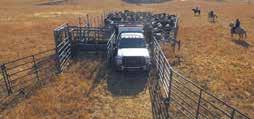
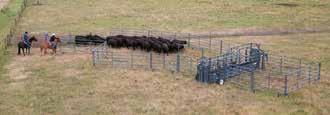
• Stable on uneven terrain.
• Wheels on each panel and electric over hydraulic jack eliminates lifting— saves time.
• Frame gates for sorting.
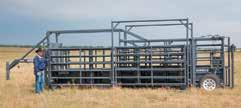
• Transport wheels are permanent, no sliding off the axles and rolling out of the way.
• Permanent sheeted adjustable alley.
April beef export value equated to $489.59 per head of fed slaughter, up 33% from a year ago and the second highest on record.
“Global demand for U.S. beef continues to overcome enormous obstacles, from inflationary pressure to logistical challenges to the recent lockdowns in some of China’s major metropolitan areas,” says USMEF president and CEO Dan Halstrom. “Most encouraging is that even as beef exports climb to unprecedented levels in our largest Asian markets, demand is strengthening in other regions as well, fueled by a strong rebound in the foodservice sector.”
Halstrom cautioned that April results did not capture the full impact of recent COVID-19 lockdowns in China, some of which continued through May and into early June. The pressure inflation imposes on consumers’ discretionary income and the rising strength of the U.S. dollar versus some key trading partner currencies are also growing headwinds for U.S. red meat exports.
For January through April, beef exports increased 5% from a year ago to 478,260 mt, valued at $4.05 billion (up 38%). Average value per of fed slaughter was 39% higher at $478.03 per head.
“The global economic outlook for
2022 remains positive, but previous growth projections are moderated due to trade disruptions, rising energy costs, rising inflation rates, and commenced tightening of monetary policy,” according to the latest quarterly Outlook for U.S. Agricultural Trade from ERS and the Foreign Agricultural Service (FAS).
Compared to the previous Outlook, ERS and FAS analysts lowered projections for this year’s world gross domestic production to 3.6% from 4.4%.
“The Russian invasion of Ukraine has presented new challenges to global economic growth,” analysts say. “The conflict and resulting response have further elevated energy prices, most immediately impacting the European market. Continued supply chain constraints and complications remain a significant global growth headwind.

Central banks are expected to respond to rising inflation rates by implementing contractionary monetary policy. The tightening of monetary policy typically presents challenges to economic growth in the short term.”
U.S. GDP was forecast at 3.7% versus 3.8% in the previous report.
Even so, U.S. agricultural exports in fiscal year 2022 are forecast at a record $191.0 billion, up $7.5 billion from the February forecast, led by increases in corn, cotton, and soybeans.
GIVE PEACE OF MIND GELBVIEH
MATERNAL SUPERIORITY
Gelbvieh maternal influence in a crossbreeding system offers added fertility, increased longevity, and more pounds of calf weaned per cow exposed. Highly productive cows with adaptability, versatility, and ability to own and raise a calf can have a positive impact on your bottom line.
& BALANCER ®
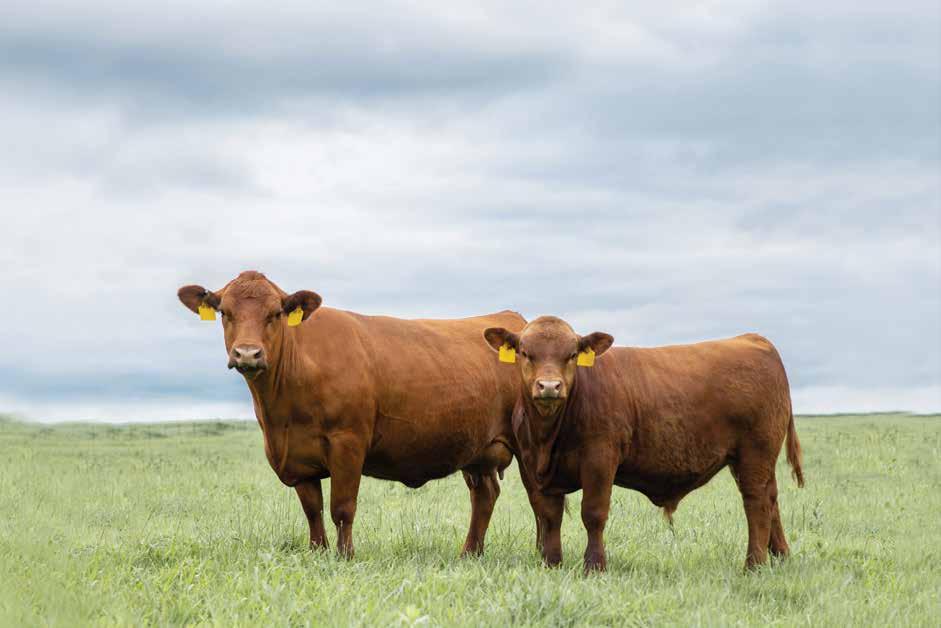
page 14 Summer 2022 The First Hydraulic Corral and still the Largest!
Rawhide Processor
Rawhide Portable Corral 900 NORTH WASHINGTON ST., ABILENE, KS 67410 785.263.3436 www.rawhideportablecorral.com 3 Sizes Available!
GELBVIEH.ORG
AHA and CSU Begin Sustainable Genetics Research

“As individual cattle producers and as the collective beef industry, we will continue to be asked to do more with less as it relates to environmental and economic sustainability,” says Jack Ward, executive vice president of the American Hereford Association (AHA). “That’s why we’re excited to begin this cooperative research agreement with Colorado State University (CSU). It leverages decades of AHA research and data collected by AHA members aimed at characterizing genetics associated with production efficiency, which plays a key role in environmental and economic sustainability.”
AHA data includes individual feed intake records collected through its National Reference Sire Program since 2010. As well, Ward emphasizes AHA began whole-herd reporting in 2001 to secure complete calf crop information and eliminate reporting bias.
Specifically, AHA-CSU cooperative research will enhance understanding of the genetic differences in seedstock relative to enteric methane production and nitrogen excretion. The research includes identifying selection tools that can help reduce beef’s carbon and environmental footprint.
Methane emission, as a genetic trait in cattle, appears to be moderately heritable with genetic correlations (modest to strong) to economically relevant production traits, such as measures of growth, dry matter intake and various estimates of feed efficiency.
Direct emissions from the animal agriculture sector accounts for 3.8% of U.S. greenhouse gas (GHG) emissions, according to the nation’s Environmental Protection Agency. Enteric methane accounts for approximately 27% of methane emissions in the U.S. Worldwide attention is also focusing more intently on nitrogen—a by-product of rumen fermentation. Previous research suggests genetics play a significant role in nitrogen excretion by cattle, and when selected for, an individual animal’s environmental footprint can be reduced.
“We know genetic improvement of our industry is driven by gains made in the seedstock sector. One only needs to look at changes in carcass meat yield and quality over the last two decades to realize the potential for improvements in seedstock genetics to transform the entire beef industry,” says Mark Enns, PhD, a beef cattle geneticist at CSU and a key member of the research team.
Multiple Values
“Often, we hear criticism leveled at the beef industry regarding greenhouse gas emissions and the impact of cattle on the environment, but with little context,” Enns says. “Cattle also sequester carbon and contribute to environmental health. This project will contribute to the beef cattle industry’s goal of demonstrating carbon neutrality by 20401.”
Given the Hereford breed’s inherent genetic advantages associated with
production efficiency, documented by the U.S. Meat Animal Research Center, Ward says documenting the relationship between traits associated with efficiency and GHG emissions is the logical next step for the breed and the industry.

“Beef industry stakeholders including the National Cattlemen’s Beef Association have committed to improving the environmental impact of U.S. cattle production. This project aims to develop a selection tool for the American


Hereford Association and the broader cattle industry that helps producers identify genetics that will have reduced greenhouse gas emissions without sacrificing animal productivity,” says Kim Stackhouse-Lawson, PhD, director of CSU’s AgNext, a pioneering research collaborative developing sustainable solutions for agriculture.
By leveraging existing animal performance data and monitoring animal emissions, Stackhouse-Lawson explains the goal is to identify genetic
F&R Livestock Resource page 15
it starts with great cows. Introducing the MotherlodeTM Sale – your opportunity to invest in the industry’s largest and line-bred maternal cow herd. Sale Manager: The American Angus Hall of Fame - Curt Schaff | 816.520.6447 Jorgensen Land & Cattle Headquarters | 31250 265th Street | Ideal, SD 57541 | 800.548.BULL • Ideal 3020, the dam of Ideal Encore; Encore is our $255,000-valued, easy calving herd sire that makes great daughters • Ideal 6077, the Pathfinder dam of Ideal All Pro, the top-selling bull from our 2022 50th Anniversary Bull Sale who sold half-interest for $75,000 • A full sister and a maternal sister to Ideal Encore • Selling 200 head of Bred Mature Cows, Donor Cows, Cow/Calf Pairs, and Bred & Open Heifers sale features Saturday, September 17, 2022 • 1 PM Central Time JRG_MotherlodeSale_JrPaage_LivestockResource_r2v1_.indd 1 7/6/22 9:07 AM
traits that influence environmental emissions from individual animals and then develop selection indices that can be used to reduce the environmental impact of cattle, while maintaining, and ideally improving economic returns to producers.
“This project will also position the American Hereford Association as a sustainability leader in the beef industry through the development of genetic selection tools that can identify and inform breeders of genetics that meet climate goals without sacrificing quality, performance, and efficiency,” says Stackhouse-Lawson.
Further, Enns notes the project has potential to pave new paths of revenue for cattle producers. These could include such things as verified sustainable production claims, in addition to commonly discussed carbon credits.
Adding to Beef’s Positive Story
Ward emphasizes the U.S. beef cattle industry has a long history of demonstrating extraordinary gains in efficiency over time, using genetics, technology and management to produce more beef with fewer cows and less land.
“We believe this research will help us identify ways to magnify the gains the industry has already achieved,” Ward says.
“CSU is involved in this project
because we are passionate about beef production and the beef industry, and the societal benefits it brings from the upcycling of human-inedible plant materials and by-products into high-quality protein,” Enns says. “From a genetic improvement standpoint, CSU has a long history of new trait development
and delivery of selection tools to the industry. As such, we feel we have much to contribute in this realm, striving to produce cattle that meet consumer demands, yet have a smaller environmental footprint.

“AHA is excited to work with CSU’s talented scientists and researchers that
1Demonstrating climate neutrality of U.S. beef production by 2040 is one of the industry sustainability goals developed by members of the National Cattlemen’s Beef Association.

page 16 Summer 2022
are part of the industry leading AgNext team,” Ward says.
Pursed and Pinched
By Wes Ishmael
Aunt Pinky’s Irish disposition was easily ruffled, but she was harder to scare than a slab of granite. That’s why Hooter was extra shaken when his aunt grabbed his arm with one hand, clawed for the door handle with her other one, and commanded him to stop.
She scrambled from the pickup before Hooter could ask why, heading for the front doors of the big-box they’d just left—shoulders square, eyes fixed and blazing, ignoring the squealing brakes and honking horns left in her wake.
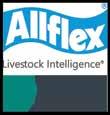
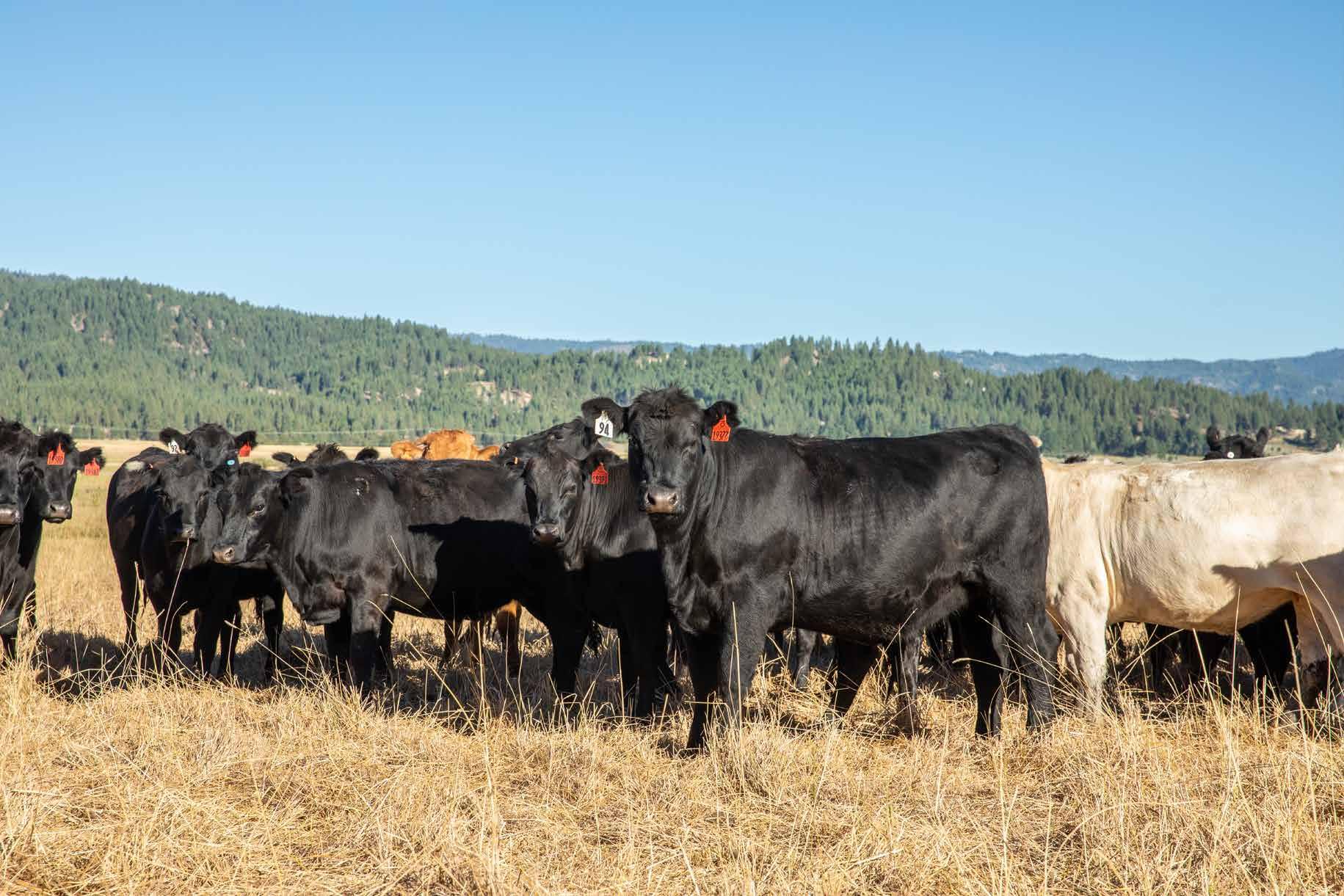

It was easy to find her once Hooter got inside. A crowd was gathering around the checkout lane that Hooter and his aunt recently exited.
“What do you mean, it’s not here, we just left,” Aunt Pinky demanded. She was clenching the cashier’s shirt collar.
“You tell him sister,” shouted an aging hipster, astride one of the store’s courtesy scooters. A faded Mighty Mouse tattoo danced on her sagging bicep, while the unlit cigarette between her lips twitched in time to her words. “I don’t trust anybody younger than 50.”
The cashier—a youngish man with earrings and a ponytail—was paler than faded chalk, eyes wide, apparently unable to speak.
Hooter was trying to get to his aunt. “Speak, boy!” shouted the woman riding the cart. “Hold on, I got me some of that pepper spray here somewhere.” Her eyes narrowed. “Not just pepper spray, it’s ghost pepper.”
“I don’t believe that will be necessary,” came a kindly voice that belonged to a security man who had appeared out of the proverbial ether.
The security man placed a giant and gentle hand on Aunt Pinky’s shoulder. “Ma’am, my name is Eugene Pickett. If you’ll kindly let go of young Alvin here, I’m sure we can sort out whatever’s happened.”
Aunt Pinky loosened her grip. She looked at Eugene. “Purse. My purse. It’s gone.”
The Baggage of Progress
Hooter was unsure of the women in his own generation, even less certain of the ones that came next, but he understood that Aunt Pinky and her peers had anything that anyone could ever need in their purses: bandages and scarves, lipstick and horse liniment, pencils and coins, postage stamps and crackers, checkbook and
gum, tape measure and sugar packets, nail file and aspirin…
Even Nelda Isselfrick—who Aunt Pinky would never count on for anything—had been known to produce a pair of pliers and a derringer pistol from the depths of her saddlebag when the occasion required.
So, Hooter understood why his aunt was so upset to find her purse missing.
Eugene led Hooter and his aunt to a small cubicle.
“I’m so sorry you’re having to go through this,” Eugene said. “Can you
tell me what your purse looks like and where exactly you remember seeing it last?”
“It’s a leather purse—good leather—about yay big,” said Aunt Pinky, indicating with her hands the rough dimensions. “Hooter here made it for me. Some of the lacing was getting frayed in the lower corner.”
She cast an accusing eye at her nephew. “You told me you were going to fix it.”
“And, what color was it?”
It was Eugene’s turn to receive
Aunt Pinky’s disapproving look. “What do you mean what color? It’s leather. You do know what leather looks like don’t you?”
“Yes, but I was wondering…”
“She just means it’s natural leather without any added color,” Hooter tried.
“Ruins it,” Pinky snapped. “Why anyone would take leather and color it up like a circus is beyond me.”
Eugene gave a nod of appreciation to Hooter’s help. “And when exactly did you last see this leather purse.”
F&R Livestock Resource page 17 800.989.8247 | www.allflexusa.com
John
Aunt Pinky looked like she might cry. “I don’t ever remember not seeing it. I always have it with me.”
“I see, but you had it with you to pay at checkout?” Eugene asked.
“I always do.”
Hooter hated to, but knew he had to. “Actually, I paid for the garden hose, remember?”
Aunt Pinky thought and then said. “Of course you did, and should have.”
She looked at Eugene. “He fairly well shredded the old one. You wouldn’t think it was asking the world for someone to change a coupling.”
“So, you can’t say for sure that you had your purse with you?” Eugene wondered softly, without any hint of accusation.
“Well, like I said…of course I would have… ” Tears were beginning to well up in her eyes.
“Did you have your cell phone in your purse?” Eugene tried hopefully. “Perhaps we could dial the number and listen for it as we walk through the store.”
“The battery went dead last week. I should have known. I bought his old phone off of him,” she said, casting daggers at Hooter.
“It worked fine until you dropped it in the water trough.”
“Some technology…”

Eugene interjected, “What about the contents? How many credit cards or debit cards?”
“None. I don’t believe in using them. Speaking of which, you people are making it harder to use checks here.”
“Drivers license?”
“I reckon so, but I don’t know about the expiration date. A person doesn’t forget how to drive, for Heaven’s sake.”
Eugene tapped his fingers on a clipboard. “I tell you what, I’m going to make another quick run over to lost and found, just to be sure. And Hooter, perhaps you could try to retrace where you and your aunt were as you shopped.”
Hooter nodded.
“And the trash cans,” Aunt Pinky shouted after him. “Be sure to check the trash cans in the parking lot. They might have tried to get rid of the evidence.”
Digging Up Bones
Retracing steps in the store was easy enough. Hooter and his aunt only went as far as the garden center. The parking lot, though—you never consider the vastness until you contemplate the number of trash cans.
Hooter grabbed a sorting stick from his pickup. Logic said to try the cans nearest the doors closest to where he and Aunt Pinky exited. He was probing the fourth can when the flower child idled by on the store scooter.
“Rock on brother,” she shouted between puffs on her cigarette. “I once found a perfectly good hamster cage in one of those.”
At least 90 minutes and too many questions later, Hooter satisfied himself that his aunt’s purse was not in a parking lot trash can.
Aunt Pinky’s brief look of hope disappeared when she saw the look of disgust on Hooter’s face.
Finally, Hooter got Aunt Pinky to leave, after thanking Eugene for his hospitality.
The trip back to Apache Flats was silent, except for the Willie Nelson music Aunt Pinky favored when she was blue.
Hooter went to unlock the front door for his aunt.
There it was, glowing like a beacon, the gnarled, hand-tooled purse, sitting there, right where she’d set it to lock the door.
Hooter wanted to scream.
“Thank goodness,” Aunt Pinky said. She opened the purse for a quick inspection and then turned to Hooter and glared. “It’s a good thing for you this turned up.”
“But…”
“Good old Eugene,” Aunt Pinky said. “I knew I could count on him.”
Editor’s message continued
Continued from page 3
Brighton Market opened and cattle ranchers slaughtered their own animals and brought to the market for auction. Call me a cynic, but I’m all for doing a deep dive scrutiny of any other industry with two and a half centuries of existence, much less progress, now challenged with supplying meat protein to a global population.
Beef production is the amalgamation of geography, environments, genetics, nutrition, best practice animal welfare, husbandry and
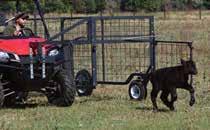
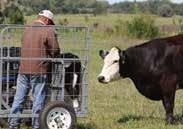
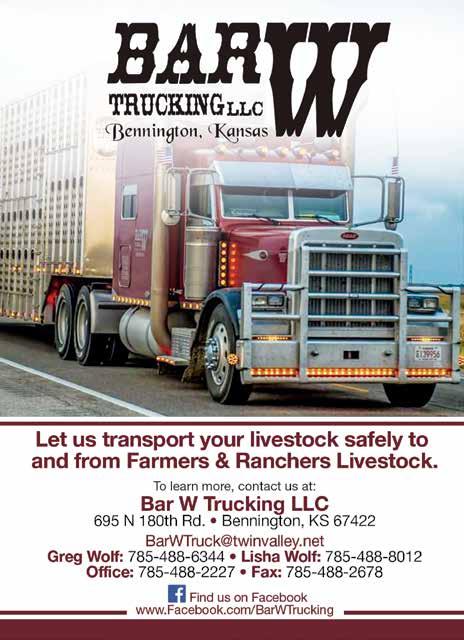
inconceivable, long term financial commitments. Processing is the amalgamation of all of production plus global marketing, geopolitics, Black Swan events, catastrophic weather occurrences and other unforeseen market disruptions.
There are vastly different challenges and expectations to getting a load of cattle to market versus waiting on the next generation of my Apple watch. I really love my Apple watch, but it has no nutritional value!
page 18 Summer 2022
A Cowman’s Best Friend at Calving Time! Safe Processing!Jeff Hall, MO - "Has turned tagging and working calves into a one man operation, and made it safer to do it."
"Never has tagging a calf been easier or safer. Momma cows are not near as nervous when they can smell their calves and you are safe."
Gary Reimer, OK -
really like my calf catcher. It paid for itself the first time out as needed to catch calf with
and it worked great. I recommend it to anyone with a cow-calf operation." Now available with digital scale! Fits ATVs and UTVs! ONE PERSON can now SAFELY and EASILY process calves without concern of the protective mother cow! Watch Action Video at SafetyZoneCalfCatchers.com For local dealers or to order, call 877-505-0914 today! FACTORY DIRECT PRICING
Zimmerman, KS - "I
pneumonia,
YOUR BEST LINE OF DEFENSE.
The #1 Pour-On dewormer in the industry doesn’t play games.1 Internal parasites can do a real number on your herd and your operation’s bottom line. Without dewormers, cow-calf producers can sacrifice more than $165 per head in lost returns.2 Settle the score before they cost you with Cydectin® (moxidectin) Pour-On or Cydectin® (moxidectin) Injectable. Cydectin delivers persistent control of costly parasites without posing a risk to environmentally beneficial dung beetles and earthworms.3,4 CydectinBeef.com
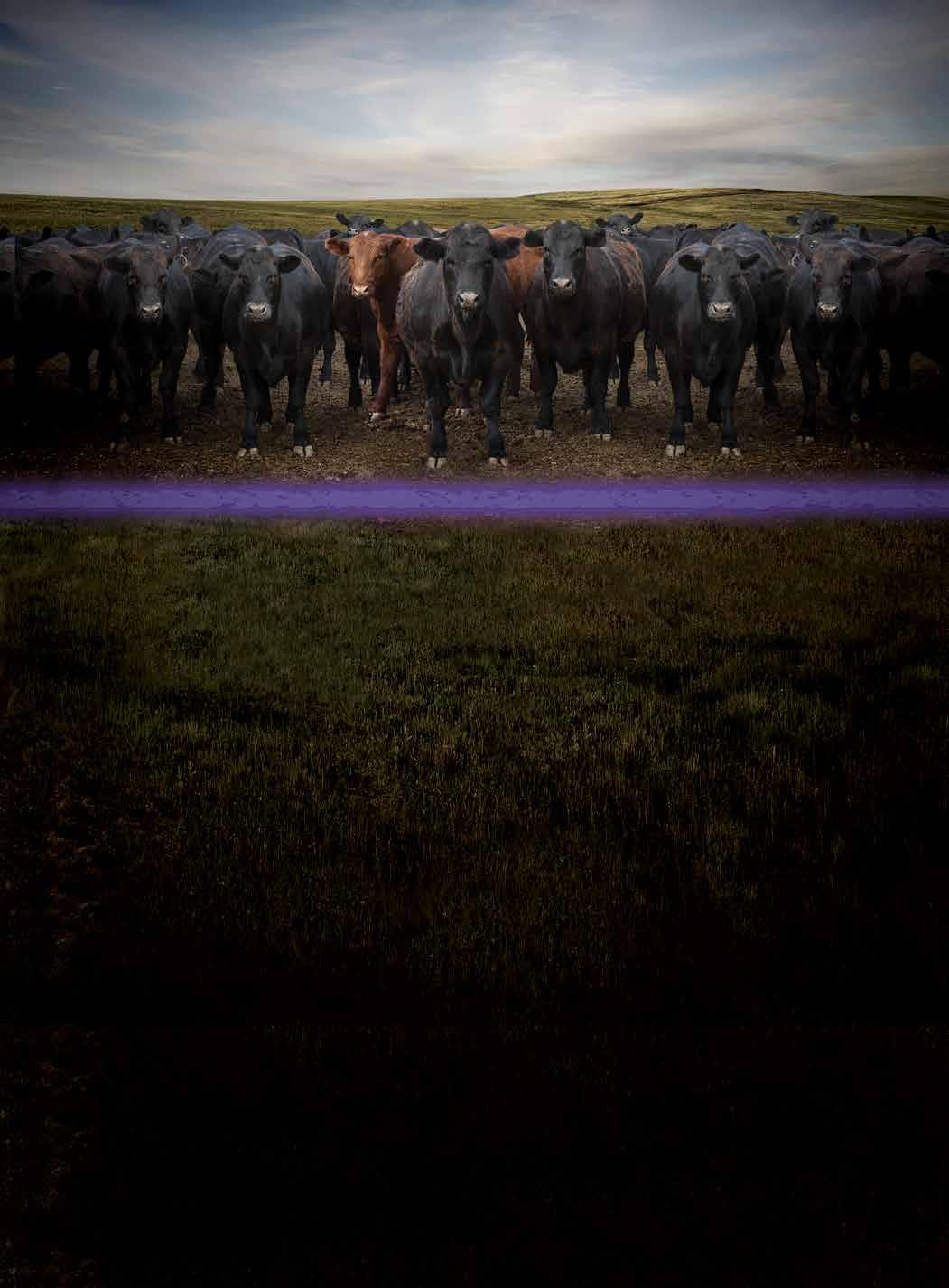
Keep Cydectin Out of Reach of Children.





1 Elanco Animal Health. Data on File.










2 Lawrence, J., Ibarburu, M. 2007. “Economic analysis of pharmaceutical technologies in modern beef production.” Proceedings, NCCC-134 Conference on Applied Commodity Price Analysis, Forecasting, and Market Risk Management; 10.
3 Suarez, V., Lifschitz, A., Sallovitz, J., et al. 2009. “Effects of faecal residues of moxidectin and doramectin on the activity of arthropods in cattle dung.” ScienceDiet.72 1551-1558.
4 Environmental Assessment. Cydectin® moxidectin 0.5% Pour-On for Cattle. Fort Dodge Animal Health, June 1997.


Cydectin, Elanco and the diagonal bar logo are trademarks of Elanco or its affiliates. ©2022 Elanco. 22-ELA-0656. PM-US-22-0389





(moxidec
tin)
DEREK
OWNER
BRAD LINDSTROM

OWNER
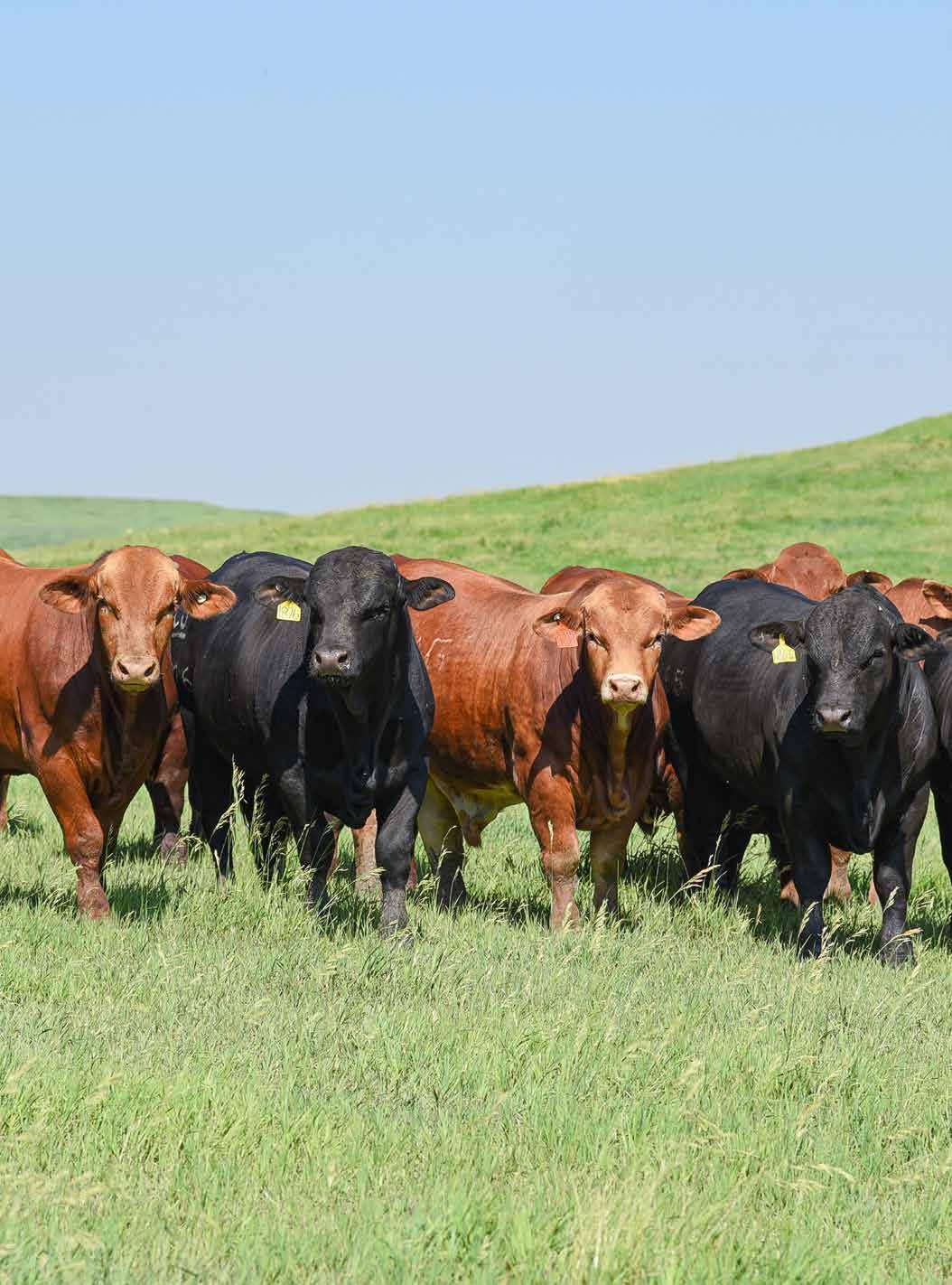
31517 VERA RD PAXICO, KANSAS 66526 NEXTGEN OFFICE 785-560-4444 WWW.NEXTGENCATTLE.COM
THOMPSON | 785-213-1753
|
DEREK@NEXTGENCATTLE.COM
|
785-580-6883
|
THOMPSON |
| DAMON@NEXTGENCATTLE.COM BILL PENDERGRASS | 210-464-6002 DIRECTOR OF GENETICS & BREEDING DOUG HUSFELD | 830-998-2023 DIRECTOR OF MARKETING ANDREW BIRD | 785-230-4802 ANDREW@ NEXTGENCATTLE.COM SEPTEMBER 24, 2022 NEXTGEN CATTLE CO, PAXICO, KANSAS OFFERING 25O BULLS DEVELOPED ON FLINT HILLS GRASS BEEFMASTER | CHAROLAIS | ANGUS JOIN US THE EVENING PRIOR FOR THE FEMALE FEATURE
BRAD@NEXTGENCATTLE.COM DAMON
785-640-1243 OWNER























































































